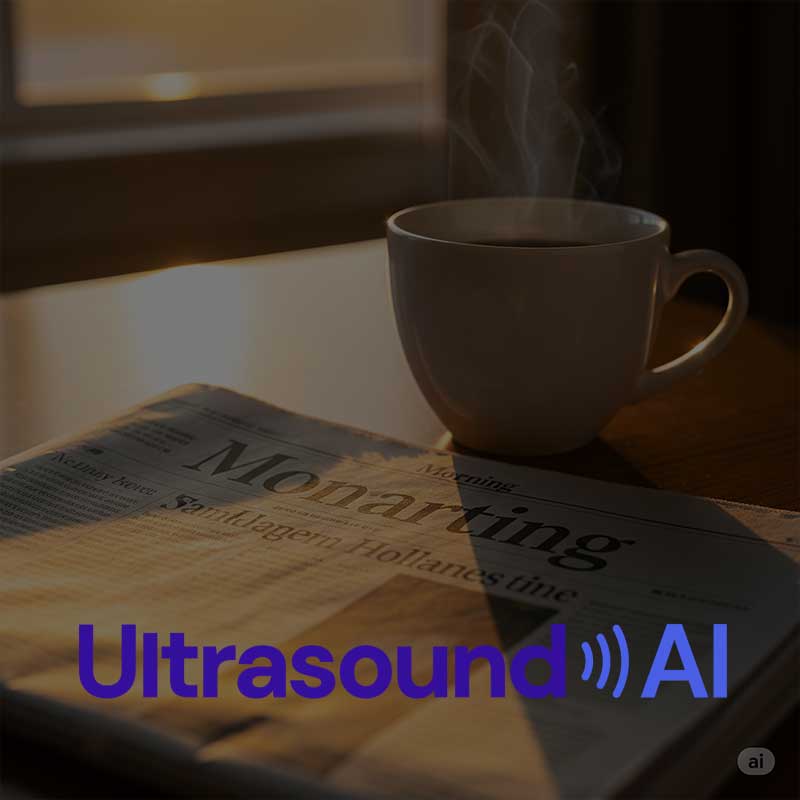Ultrasound AI publishes landmark study demonstrating breakthrough in predicting delivery timing using AI and ultrasound images

Ultrasound AI, a pioneer in artificial intelligence applications for medical imaging, today announced the publication of groundbreaking findings from its PAIR (Perinatal Artificial Intelligence in Ultrasound) Study in The Journal of Maternal-Fetal & Neonatal Medicine. The study was performed in collaboration with researchers at the University of Kentucky and validates Ultrasound AI’s proprietary technology that more accurately predicts time to delivery using only standard ultrasound images. This technology offers a non-invasive, efficient, and scalable tool for improving pregnancy outcomes, particularly in the fight against preterm birth.
The AI software was developed and trained using de-identified ultrasound images from a cohort of women who delivered at the University of Kentucky from 2017 to 2021. Led by John M. O’Brien, MD, Division Director of Maternal-Fetal Medicine (MFM) at the University of Kentucky (UK); Garrett K. Lam, MD, MFM specialist and professor of Obstetrics and Gynecology at UK; and Neil B. Patel, MD, a MFM physician at Ascension Sacred Heart Pensacola, the team’s peer-reviewed publication titled “Perinatal artificial intelligence in ultrasound (PAIR) study: predicting delivery timing,” is now live and accessible online here.
“This is a major milestone for the field of maternal-fetal medicine and for Ultrasound AI,” said Robert Bunn, Founder and President of Ultrasound AI. “Our AI’s ability to accurately predict delivery timing–and learn and improve over time–has profound implications for both clinical practice and public health, especially in settings where early risk identification is critical and access to specialist care is limited.”
Key findings from the study:
- Improved prediction for preterm birth (PTB): Through continuous retraining, the AI improved its prediction performance for spontaneous PTB, increasing the R² from 0.48 for the first iteration (V1) to 0.72 for the fourth iteration (V4). AI can learn sequentially to better predict preterm birth which will likely lead to additional advancements in the future.
- High accuracy in delivery timing: The AI achieved an R², or accuracy measure, of 0.95 for term births and 0.92 for all births, accurately predicting the number of days until delivery based solely on ultrasound imagery.
- Robust and generalizable: The study analyzed over 2 million ultrasound images across thousands of patients, enhancing broad applicability. The AI performed consistently across all trimesters and patient demographics.
- Independent of risk factors: Unlike traditional PTB risk assessment tools, the AI makes predictions without relying on clinical measurements, maternal history, or operator input, making it ideal for both high-resource and resource-limited settings.
- Continuously learning: Ultrasound AI’s model uses a combination of supervised and unsupervised learning and improves with every retraining cycle and every new image it analyzes.
Transforming Obstetric Care
Preterm birth is the leading cause of neonatal mortality globally, yet prediction remains a persistent challenge. Ultrasound AI’s technology offers a potential leap forward: by leveraging existing ultrasound workflows and requiring no additional inputs, it delivers scalable, clinician-friendly decision support that can be deployed anywhere ultrasound imaging is available.
“AI is reaching into the womb and helping us forecast the timing of birth, which we believe will lead to better prediction to help mothers across the world and provide a greater understanding why the smallest babies are born too soon. AI will eventually provide greater insights in how to target and prevent adverse pregnancy outcomes. This work is an important first step in the start of a powerful advance in technology for the field of Obstetrics,” according to Dr. O’Brien.
To access the full study, please visit: https://doi.org/10.1080/14767058.2025.2532099